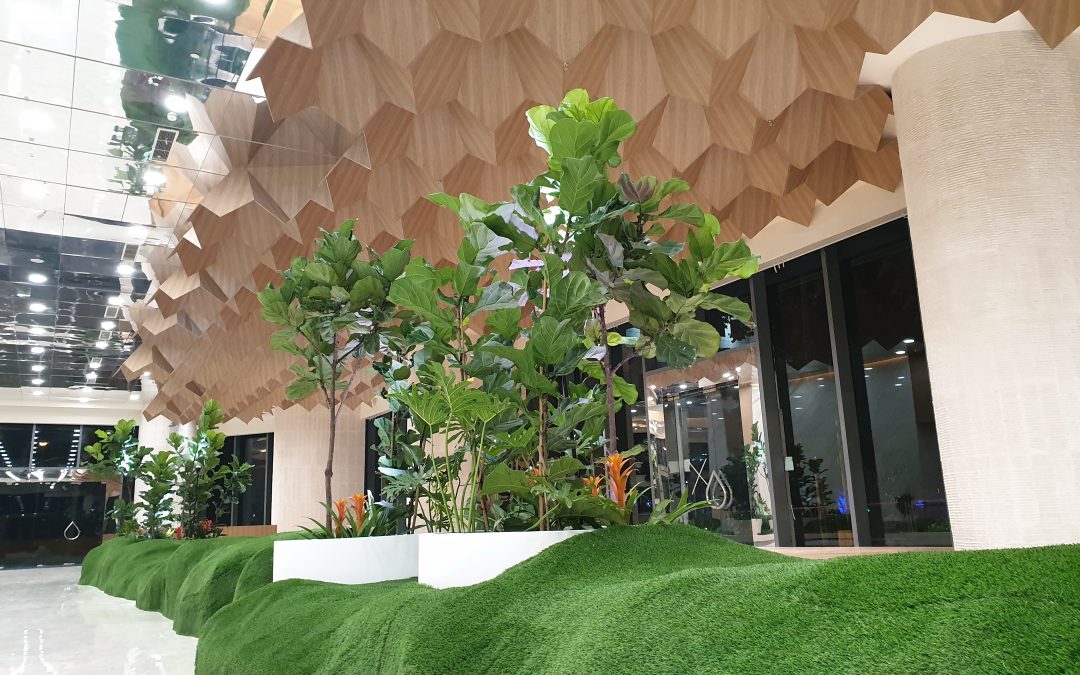Our planet is undergoing significant changes, from urbanization and population growth to climate challenges and environmental degradation. In the face of these transformations, innovative solutions are emerging to revolutionize the way we design, maintain, and interact with landscapes. In this blog, we will explore the exciting world of landscape innovation, showcasing cutting-edge ideas and technologies that are shaping the future of our outdoor spaces.
- Green Roofs and Walls: Urban Oases
Urbanization is a global trend, and cities are continually expanding. This has led to a rise in concrete jungles, but innovative landscape architects and designers are working to reverse this trend. Green roofs and walls are emerging as solutions to transform urban spaces into green oases. These vegetated structures not only provide aesthetic appeal but also offer improved air quality, temperature regulation, and biodiversity support. They also help manage stormwater runoff, reducing the risk of flooding in cities.
- Smart Landscaping: Connecting Nature and Technology
The integration of technology into landscape design is revolutionizing how we interact with outdoor spaces. Smart landscaping combines sensors, automation, and data analytics to optimize water usage, lighting, and maintenance. For example, irrigation systems are now equipped with sensors that detect moisture levels in the soil, ensuring that water is only used when necessary. Additionally, outdoor lighting can be controlled remotely, reducing energy consumption and light pollution.
- Biophilic Design: Enhancing Well-being
In an increasingly urbanized world, people are yearning for a connection with nature. Biophilic design is a trend that seeks to bring nature into our everyday environments. Innovative landscape designers are incorporating elements such as natural materials, water features, and native plants to create spaces that improve mental health and well-being. These designs also promote productivity and creativity in workplaces.
- Sustainable Landscapes: Eco-friendly Practices
Sustainability is at the forefront of landscape innovation. Sustainable landscaping practices include xeriscaping (using drought-resistant plants), rain gardens, and permeable pavement to minimize water waste and pollution. Furthermore, recycled and repurposed materials are being used creatively in landscape design, reducing the environmental footprint of construction.
- Urban Agriculture: Growing Food in the City
As urban populations grow, the demand for fresh, locally sourced food is increasing. Urban agriculture is an innovative approach to address this need. Rooftop gardens, community gardens, and vertical farming are becoming popular in cities worldwide. These spaces not only provide access to fresh produce but also promote community engagement and education about sustainable agriculture.
- Virtual Reality (VR) and Augmented Reality (AR): Reimagining Landscapes
VR and AR technologies are expanding the possibilities for landscape innovation. Landscape architects and designers can use VR to create immersive 3D models of proposed projects, allowing clients and stakeholders to experience the space before it’s built. AR apps can enhance the visitor experience in public parks, providing interactive information and storytelling.
Innovation in landscape design is not just about creating visually stunning spaces but also about addressing pressing environmental and societal challenges. Landscape architects, designers, and technology pioneers are working together to reimagine green spaces for a rapidly changing world. As we move forward, the integration of nature, technology, and sustainability will be at the heart of landscape innovation, enriching our lives and ensuring a greener, more vibrant future for our planet. By embracing these innovations, we can cultivate landscapes that not only inspire but also contribute to a healthier and more sustainable world.

